Battle of the Salic Heights
At the rate he is going, there will be nothing left to resurrect after the battle.From "Lords of Death - An Account of the Dread Wars" by Lucius Lengallen:
"In many ways, the Second Dread War mirrored the first. Titanic hordes, vast battles and sieges that lasted for centuries at a time. But things had drastically changed since the reign of Ceres Vikara nearly two centuries earlier. And the second generation of Necromancers would prove far less competent than their predecessors."
Prelude
"The second wave of Necromancers drew their power from the remnants of Ceres Vikara's Final Army. While more than half of it had been destroyed in the Battle of the Spire and subsequent campaigns, there were still over four hundred million bodies that had gone unaccounted for by 160 YoD. Around a tenth of that number, the so-called "Northern Army", had been frozen in the empty plains of northern Hemea." "In 180 YoD, it became the target of a number of Necromancers and would subsequently be broken apart. The largest contingent of roughly seventeen million was claimed by the Northern Coalition and launched south toward the Temple of Kugiren later that same year. Recognizing the threat, the Arcane Hierarchy would attempt to stall the horde at the Salic Heights, roughly one hundred kilometres north of Kugiren."Arcane Hierarchy
led by Asonios of Kugiren
~ 200.000 Soldiers
~ 150.000 Soldiers
Stall the Horde's Advance.
Heavy Casualties.
led by Asonios of Kugiren
~ 200.000 Soldiers
~ 150.000 Soldiers
Stall the Horde's Advance.
Heavy Casualties.
Factions
Leaders
Total Strength
Soldiers Committed
Goal
Casualties
Leaders
Total Strength
Soldiers Committed
Goal
Casualties
Northern Dreadlord Coalition
led by Levit the Nightbringer
~ 17.000.000 Undead
~ 11.000.000 Undead
Advance on Kugiren.
Half of the Forces committed.
led by Levit the Nightbringer
~ 17.000.000 Undead
~ 11.000.000 Undead
Advance on Kugiren.
Half of the Forces committed.
The Battle
Strategic Considerations
"Levit the Nightbringer was a known quantity by that point. Brash, arrogant and utterly bereft in terms of strategic skill, his choice of a direct assault upon Kugiren was rather predictable. Unfortunately, it was the worst possible one for the defenders. Nearly a century of mismanagement had seen Kugiren's defences fall into disrepair. And while the newly established emergency council acted swiftly to start their restoration, there could be no doubt that they would not be ready in time."
"A forward defence was the only option. The Salic Heights were seen as the ideal position. Located at the very end of the Kuthay Pass, they rose to five hundred meters above the plains to their north, and the rugged terrain created several natural funnels. Operations began in early 181, the first elements of the Hierarchy's army reaching the Heights barely a week after Levit's horde had been detected."
Look at that pathetic excuse for an army. Might as well task an ant with holding off a dragon. Do not worry, Loran, we will be sitting in Kugiren drinking tea by next week.
Operation Monster Hunt
"Asonios was quick to go on the offensive. While Levit's horde was numerous, it lacked in monstrosities. Only about four hundred were counted, and Asonios was quick to target them. He met Levit's army four weeks north of the Salic Heights. Heavy cavalry carved corridors towards larger creatures which were then attacked by small squads of mages. Using lance spells, they were able to either destroy them or do so much damage that the construct was effectively useless in battle. Levit's subordinates reacted slowly and without coordination. By the time they had amassed enough forces to counter the attack, Asonios had already retreated. The same play would repeat multiple times over the following weeks and saw more than half of Levit's abominations destroyed."
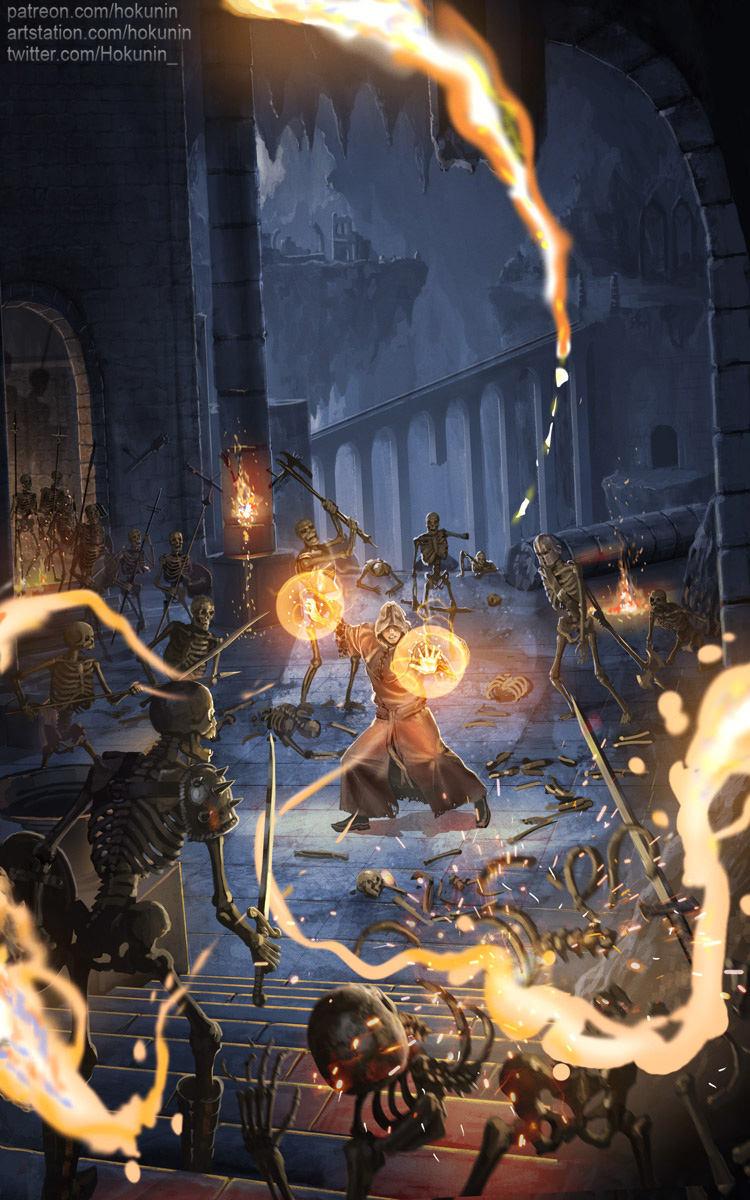 "These attacks did little to slow the horde down, however, and by late spring, the first undead emerged within sight of the Salic Heights. But these were only small groups, and it would take another two weeks before a constant shaking of the earth announced the arrival of the main army. It is here that Levit's incompetence or inexperience show themselves most drastically. Rather than have his forces attack in a slow, orderly wave that would put continuous pressure on the enemy, he decided on an all-out charge."
"With predictable results. The undead stumbled over each other as they raced toward the first line of defence. Pilling up into gargantuan clumps, they were an easy target for the veritable storm of artillery fire and magic that came raining down upon them. Breachers once again proved their worth, and the first waves were virtually annihilated. Carefully laid out firing zones funnelled the undead towards the steepest parts of the heights. There they were met by heavily armoured infantry armed with axes, hammers and halberds."
"The entire system followed a carefully managed timetable. Whenever the mages ceased their attacks, the artillery would ramp up its fire to retain the death zones. When a line of infantry was reaching exhaustion, elite squads of knights and mages would push the undead away and allow them to be replaced."
"Each shot and spell was timed to ensure maximum efficiency while keeping the pressure on ammunition and mana as low as possible. In the end, it was the sheer weight of numbers that began to move the front. Over the summer, the armies of the Hierarchy were forced to move back from one defensive line to the next."
"Levit's strategy, if it could be called that, continued to aid them as the massed charges of the undead lost any impact in the rough terrain of the heights. Controlled cave-ins caused by earth mages tore large holes into the lines of the horde. But the constant strain was starting to take effect."
"These attacks did little to slow the horde down, however, and by late spring, the first undead emerged within sight of the Salic Heights. But these were only small groups, and it would take another two weeks before a constant shaking of the earth announced the arrival of the main army. It is here that Levit's incompetence or inexperience show themselves most drastically. Rather than have his forces attack in a slow, orderly wave that would put continuous pressure on the enemy, he decided on an all-out charge."
"With predictable results. The undead stumbled over each other as they raced toward the first line of defence. Pilling up into gargantuan clumps, they were an easy target for the veritable storm of artillery fire and magic that came raining down upon them. Breachers once again proved their worth, and the first waves were virtually annihilated. Carefully laid out firing zones funnelled the undead towards the steepest parts of the heights. There they were met by heavily armoured infantry armed with axes, hammers and halberds."
"The entire system followed a carefully managed timetable. Whenever the mages ceased their attacks, the artillery would ramp up its fire to retain the death zones. When a line of infantry was reaching exhaustion, elite squads of knights and mages would push the undead away and allow them to be replaced."
"Each shot and spell was timed to ensure maximum efficiency while keeping the pressure on ammunition and mana as low as possible. In the end, it was the sheer weight of numbers that began to move the front. Over the summer, the armies of the Hierarchy were forced to move back from one defensive line to the next."
"Levit's strategy, if it could be called that, continued to aid them as the massed charges of the undead lost any impact in the rough terrain of the heights. Controlled cave-ins caused by earth mages tore large holes into the lines of the horde. But the constant strain was starting to take effect."
Storms of Fire

by Hokunin
We lost another five hundred today. Massed one this time. Fuel in their water rations.
Material
"Kugiren and its Garden Zone had moved to reactivate their military industries as soon as the northern threat had emerged. But these facilities had been left to rot for nearly a century by that point, and reactivation proved a costly and lengthy process. Half a year after military action began, the complex was only at 50% capacity. The resulting lack of supplies forced Asonios further on the defensive."
"Kugiren and its Garden Zone had moved to reactivate their military industries as soon as the northern threat had emerged. But these facilities had been left to rot for nearly a century by that point, and reactivation proved a costly and lengthy process. Half a year after military action began, the complex was only at 50% capacity. The resulting lack of supplies forced Asonios further on the defensive."
Men
"Manpower was perhaps the most critical area. The human population had barely started to recover when the Second Dreadwar had broken out. Kugiren had been forced to mobilize a tenth of its adult male population to field the force at the Salic Heights. New waves of sickness had further reduced the available pool of manpower. Asonios could not replace his losses."
"Manpower was perhaps the most critical area. The human population had barely started to recover when the Second Dreadwar had broken out. Kugiren had been forced to mobilize a tenth of its adult male population to field the force at the Salic Heights. New waves of sickness had further reduced the available pool of manpower. Asonios could not replace his losses."
Morale
"Morale was always the biggest issue when fighting the undead. The mere sight of an endless horde was enough to break even the most disciplined of armies. Additional stress came through the measures taken to fight them. The constant bombardment and necessity to be ready at any time slowly but surely drained the defenders of will and energy. Suicides began by month four."
"Morale was always the biggest issue when fighting the undead. The mere sight of an endless horde was enough to break even the most disciplined of armies. Additional stress came through the measures taken to fight them. The constant bombardment and necessity to be ready at any time slowly but surely drained the defenders of will and energy. Suicides began by month four."
Endgame
"Things turned even bleaker as autumn set in. Near-constant rain reduced the effectiveness of artillery, astriomancy and pyromancy. Neither mud nor water magic could really hamper the undead, and temperatures were not yet low enough to cause them to freeze up. Levit's advance accelerated, and he threatened to overrun the heights entirely by the middle of autumn. The worst case scenario as far as the Hierarchy was concerned." "Losing several months of preparation time and seeing the Undead within the outer reaches of Kugiren's Garden Zone, where the sheer presence of Mana prevented the cold of winter from taking effect, would have been a near-fatal blow to the hard-pressed Hierarchy. The solution? A surgical strike at Levit himself. His death would not shatter the horde but hopefully cause enough chaos to slow it down." "Unfortunately the sources become scarce at this point. How exactly Asonios managed to draw Levit out is unknown. But their duel shook the earth, and when the Dreadlord fell, he was cast down with such force that it annihilated over a hundred thousand of his creatures. The echo of his death paralyzed both the horde and Levit's subordinates. This, combined with further military action, would slow the horde down and it was only in the spring of 182 YoD that it managed to restore itself and begin the Second Siege of Kugiren."Bout a third of the horde's been crushed. Still 'orrible odds but...manageable.
Conflict Type
Military Campaign
Battlefield Type
Land
Start Date
181 YoD
Ending Date
182 YoD
Conflict Result
Necromancer Pyrrhic Victory. Death of Levit the Nightbringer. Second Siege of Kugiren begins.
Location
Second Dread War
Preceeded by
Race for the Northern Army - 180 YoD Followed by
Second Siege of Kugiren - 182 YoD - 227 YoD
"Perhaps the most prominent member of the Second Generation, Levit first rose to prominence in 172 YoD when he revealed himself to the world in the middle of Calea, the capital of the Alerian Empire. Driven off by Aleria's Wizard Kings, he spent the remainder of the 170s destroying the remnants of the old Ykonian Kingdom in northwestern Hemea. Through diplomacy and pressure, he managed to unite a number of other Necromancers into the Northern Dreadlord Coalition, which would eventually rise to be a major threat with the discovery of the Northern Army."
That's 40 million accounted for. Only about ten times that number to go.The Lost Armies
"When the Final Army was broken in 52 YoD, it left behind splinters all across the world. These remnants, ranging in size from a few dozen undead to tens of millions, remained hidden in frozen wastelands, on the ocean floor, in caves and ruined cities. It was only with the rise of the Second Generation that these remnants were seen as a threat. Most would be destroyed throughout the Dread Wars, but some survived. The last one would eventually be discovered and destroyed by the Third Archmage Yensid in 427 AoR, over two and a half thousand years after Ceres Vikara had first raised them."
Abominations and Undead
"Levit's horde lacked in two critical points. On one hand it had few abominations. Northern Hemea, whose population made up the majority of the horde, had never been home to many larger creatures. As a result the horde had only a few giants and a single Salhok in terms of heavy hitters."
"The common walker of the horde proved another issue. Since they were Undead rather than Living Dead it meant that Levit and his subordinates had to focus on controlling them, allowing the Hierarchy's mages to act basically without opposition. It further proved a major weak point, as any killed Necromancer would mean a decisive loss in coordination. A case that would eventually appear with the death of Levit himself. His subordinates took over half a year to fully restore control."
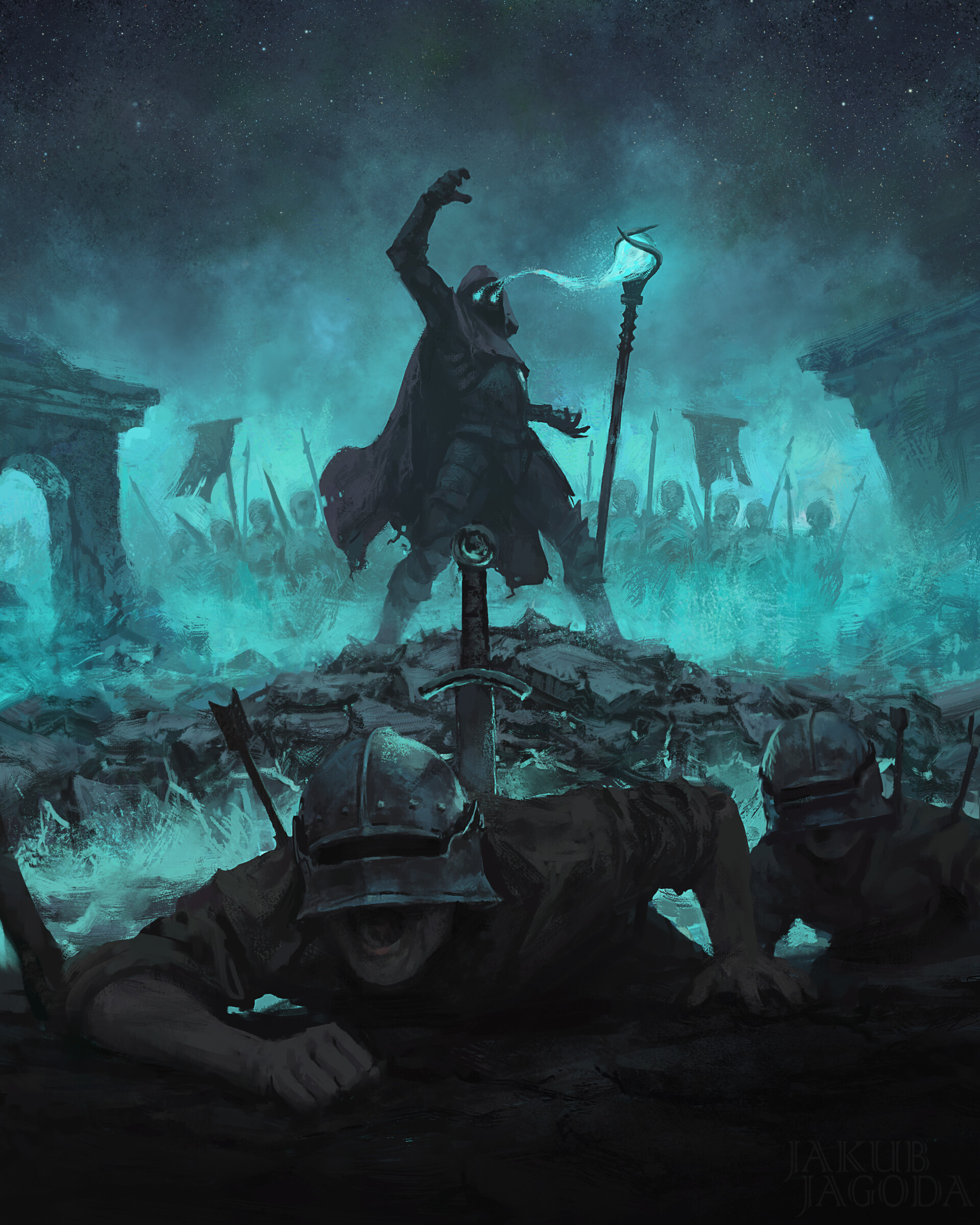
by Jakub Jagoda
Remove these ads. Join the Worldbuilders Guild

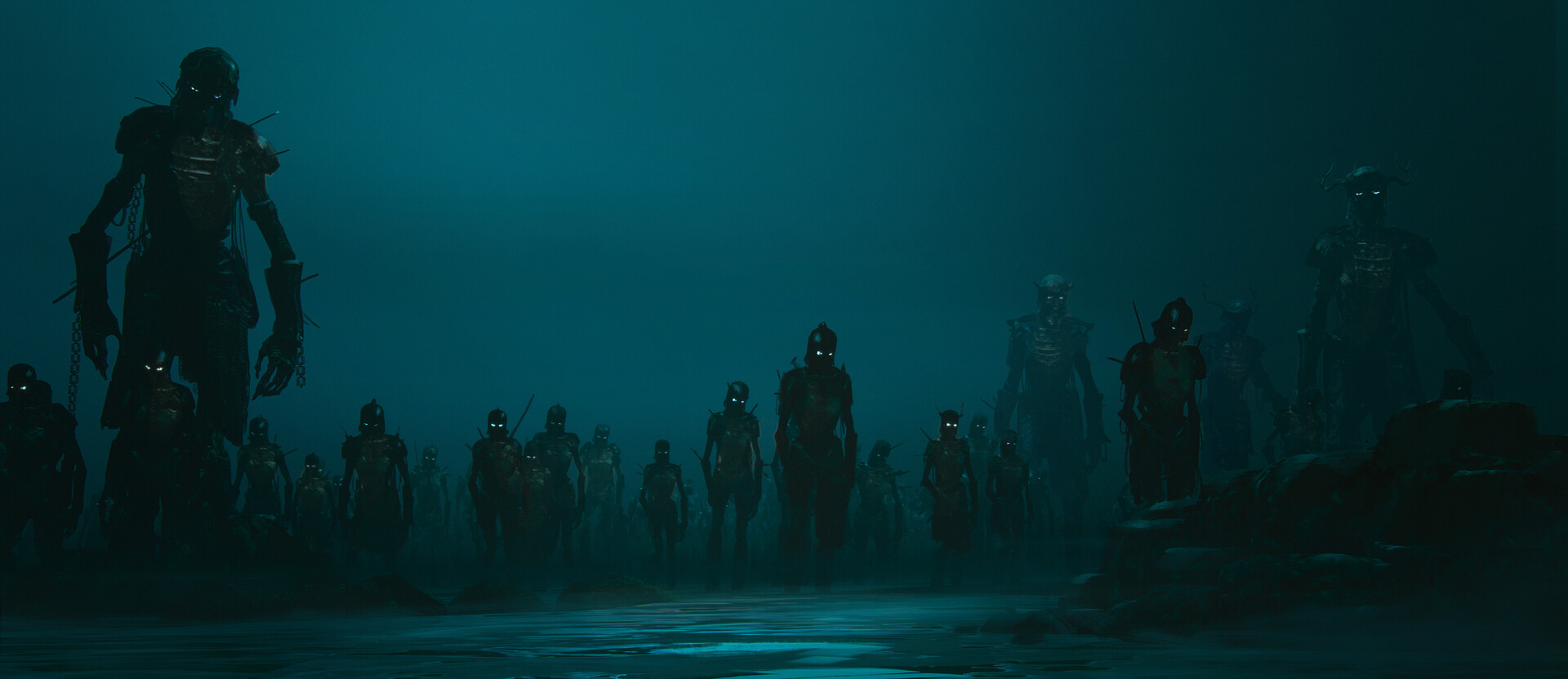
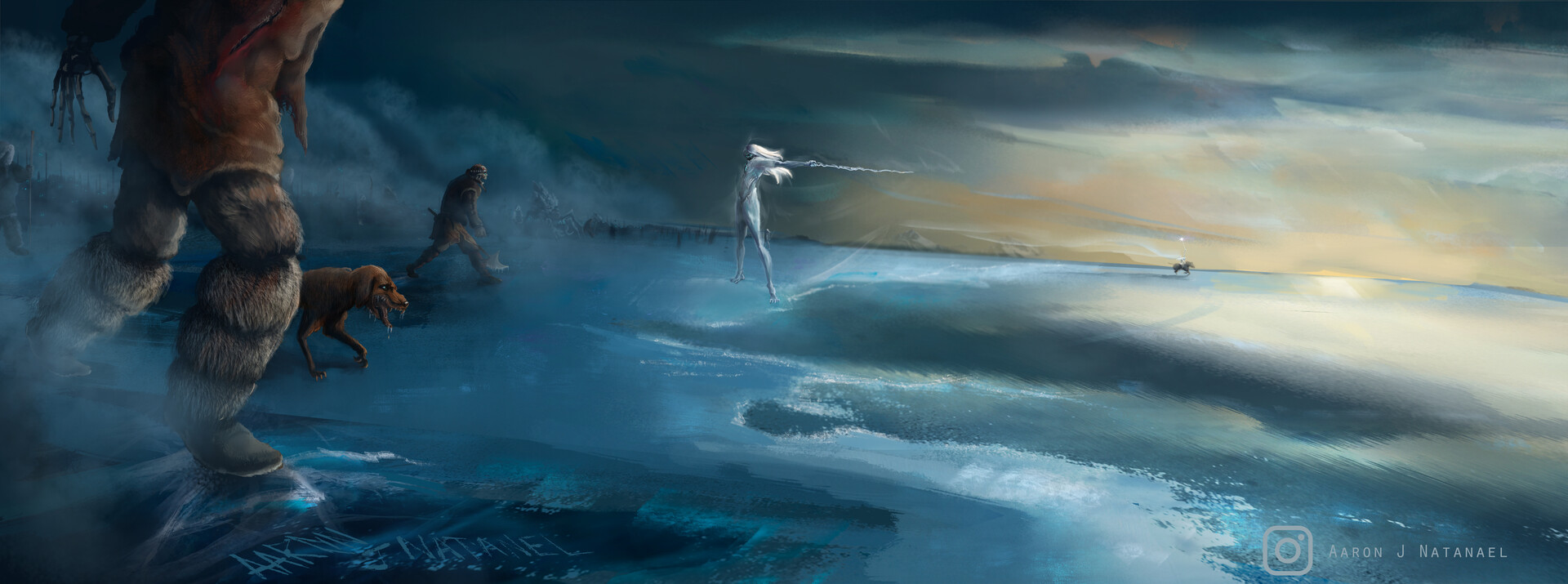
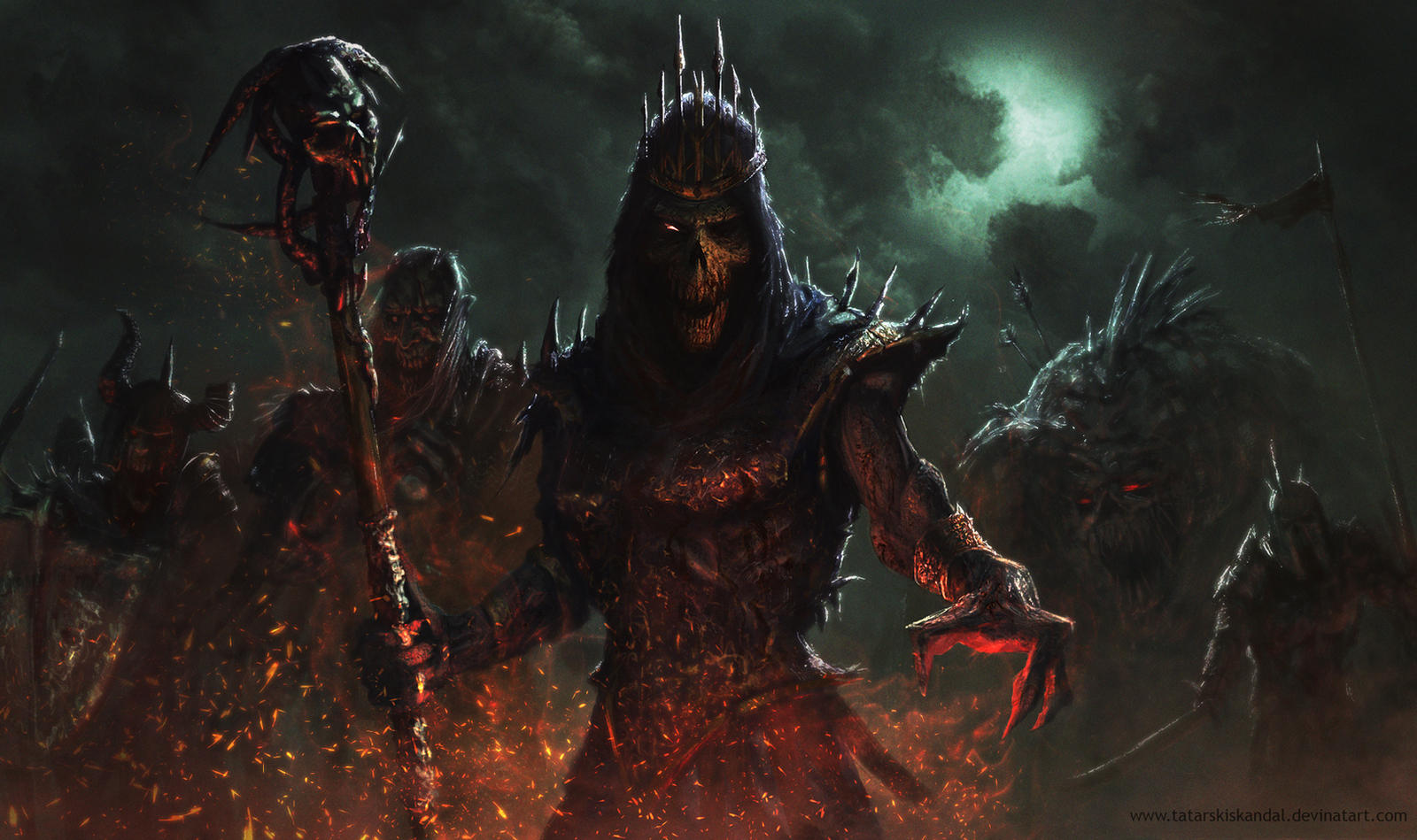
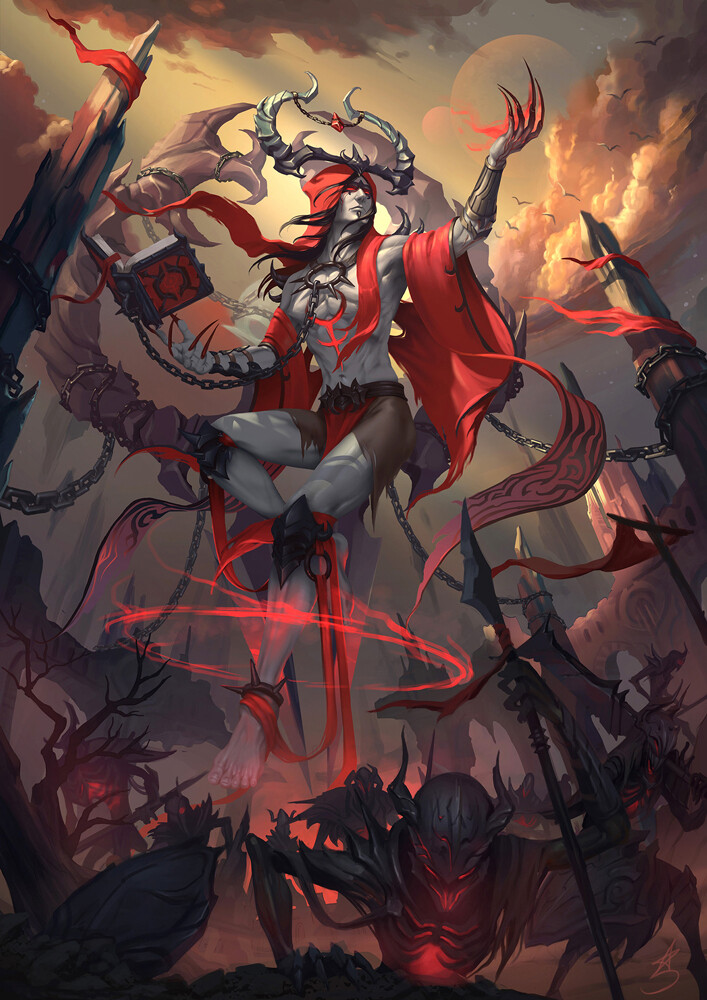
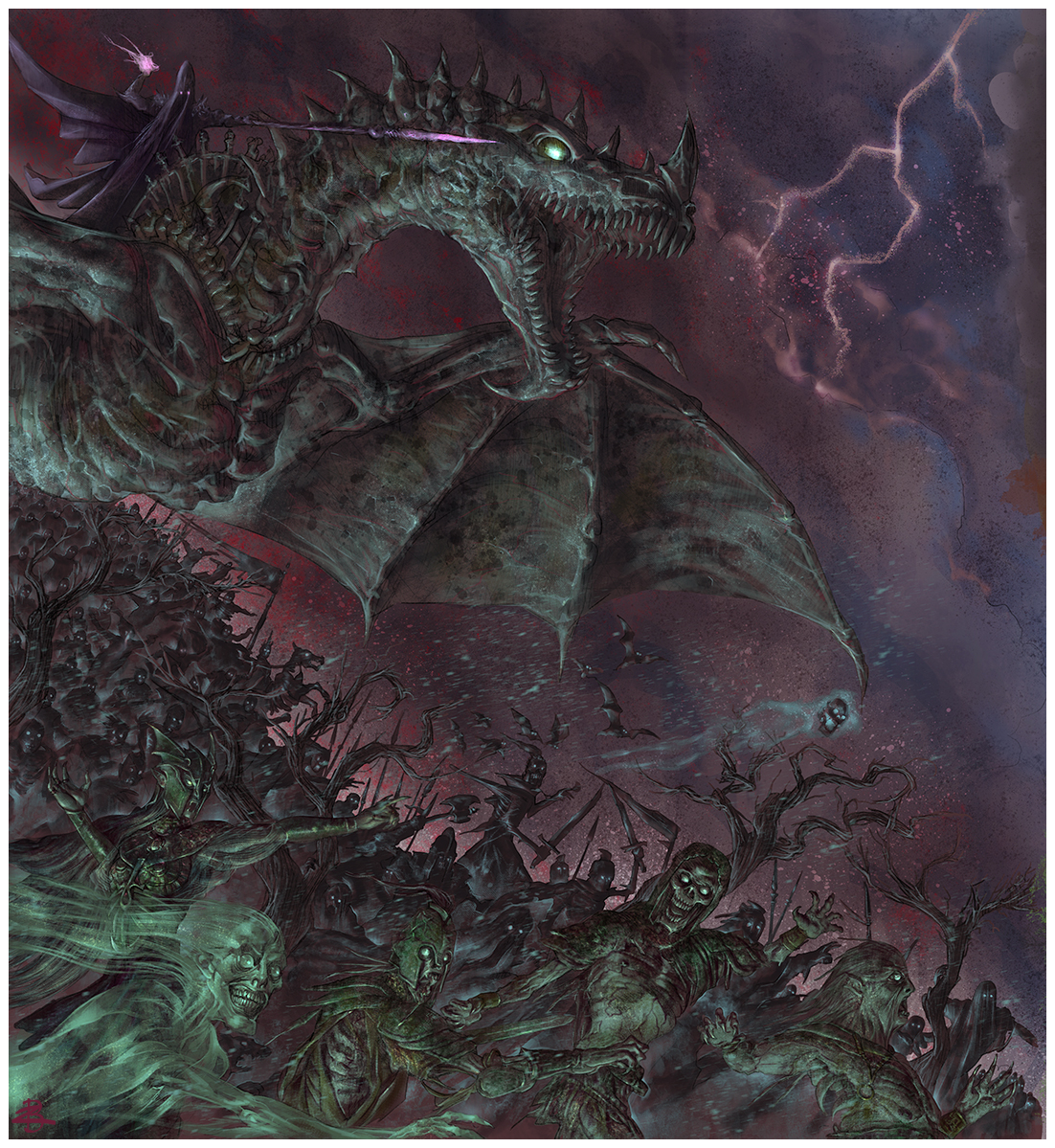

Comments